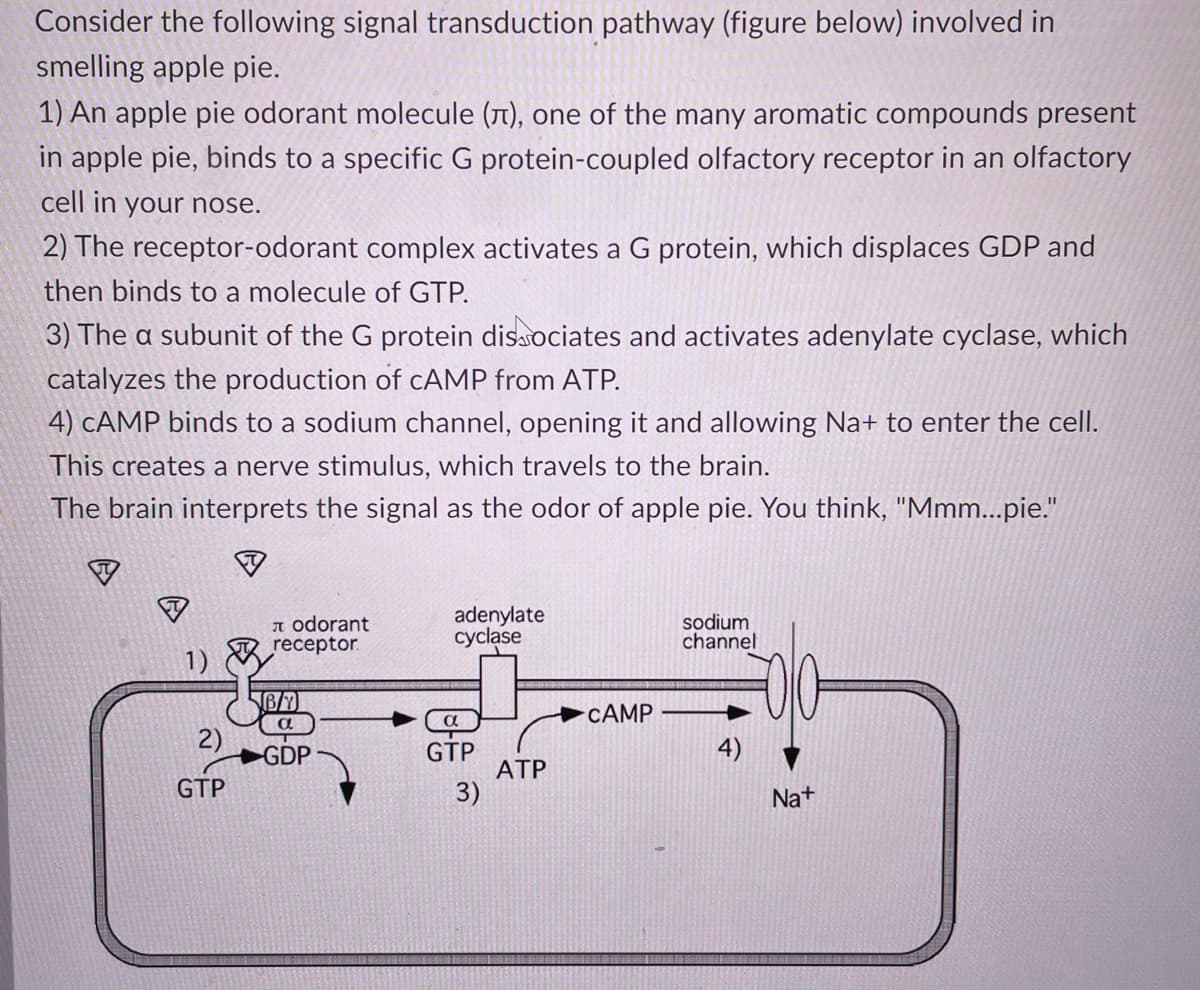A turkey ordorant molecule comes in contact with the pie ordorant receptor. Would this have an effect on the nerve stimulus being sent from this olfactory cell? Which G protein is activated in this pathway
A turkey ordorant molecule comes in contact with the pie ordorant receptor. Would this have an effect on the nerve stimulus being sent from this olfactory cell? Which G protein is activated in this pathway
Biology (MindTap Course List)
11th Edition
ISBN:9781337392938
Author:Eldra Solomon, Charles Martin, Diana W. Martin, Linda R. Berg
Publisher:Eldra Solomon, Charles Martin, Diana W. Martin, Linda R. Berg
Chapter6: Cell Communication
Section6.4: Signal Transduction
Problem 1C: How is an extracellular signal converted to an intracellular signal in signal transduction? Give a...
Related questions
Question
A turkey ordorant molecule comes in contact with the pie ordorant receptor. Would this have an effect on the nerve stimulus being sent from this olfactory cell? Which G protein is activated in this pathway?

Transcribed Image Text:Consider the following signal transduction pathway (figure below) involved in
smelling apple pie.
1) An apple pie odorant molecule (л), one of the many aromatic compounds present
in apple pie, binds to a specific G protein-coupled olfactory receptor in an olfactory
cell in your nose.
2) The receptor-odorant complex activates a G protein, which displaces GDP and
then binds to a molecule of GTP.
3) The a subunit of the G protein dissociates and activates adenylate cyclase, which
catalyzes the production of cAMP from ATP.
4) CAMP binds to a sodium channel, opening it and allowing Na+ to enter the cell.
This creates a nerve stimulus, which travels to the brain.
The brain interprets the signal as the odor of apple pie. You think, "Mmm...pie."
лodorant
receptor
adenylate
cyclase
sodium
channel
1)
4)
ATP
GTP
√6/7
a
GDP
a
GTP
3)
CAMP
Na+
Expert Solution
This question has been solved!
Explore an expertly crafted, step-by-step solution for a thorough understanding of key concepts.
Step by step
Solved in 3 steps

Knowledge Booster
Learn more about
Need a deep-dive on the concept behind this application? Look no further. Learn more about this topic, biology and related others by exploring similar questions and additional content below.Recommended textbooks for you

Biology (MindTap Course List)
Biology
ISBN:
9781337392938
Author:
Eldra Solomon, Charles Martin, Diana W. Martin, Linda R. Berg
Publisher:
Cengage Learning

Human Physiology: From Cells to Systems (MindTap …
Biology
ISBN:
9781285866932
Author:
Lauralee Sherwood
Publisher:
Cengage Learning

Biology (MindTap Course List)
Biology
ISBN:
9781337392938
Author:
Eldra Solomon, Charles Martin, Diana W. Martin, Linda R. Berg
Publisher:
Cengage Learning

Human Physiology: From Cells to Systems (MindTap …
Biology
ISBN:
9781285866932
Author:
Lauralee Sherwood
Publisher:
Cengage Learning